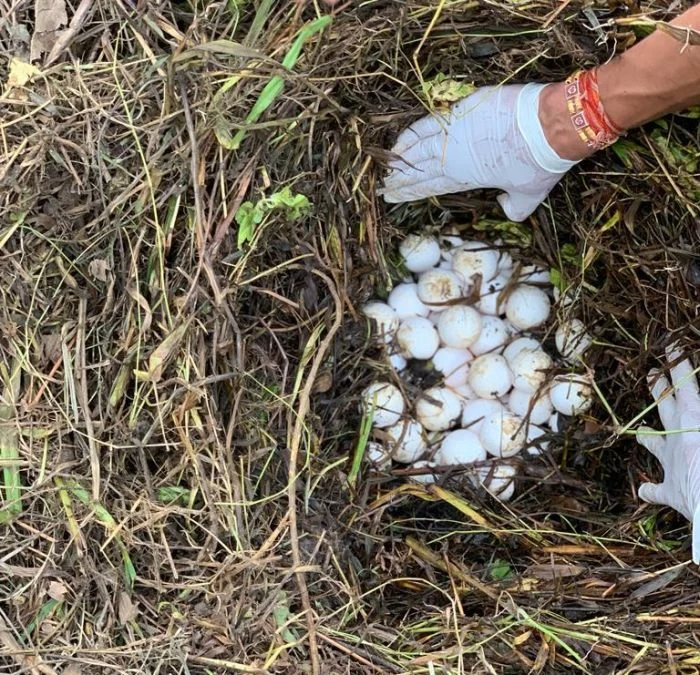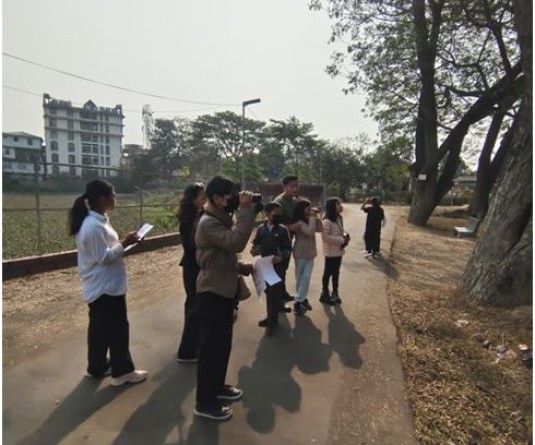
Prabhat Kumar, IFS
Divisional Forest Officer, Peren
Nagaland often referred as the land of festivals is unique in many ways. Ranging from the varying topography, cultural practices, harvesting festivals and natural resources; the state is truly blessed with everything. The concept of conservation is not new to the state and had been an integral part of the culture and practices. In numerous folklores also the interaction of people with the forest and animals is highlighted. Mountains like Mt Saramati and Mt Tiyi, considered sacred even today, big trees were never cut down randomly and were considered sacred, and the story of tiger’s close association with man is found in many folktales. Even the traditional knowledge reflects the association of the people with wildlife. The people back then had utilized their traditional knowledge in various activities. For instance the appearance of Tragopan bird once a year signifies the time to start preparation for harvesting festival; Cicada is an insect that appears during spring time when seeds start to germinate; in cultivation practices when cuckoo bird gives a distinct sound it was time for sowing seeds in the field.

In past decade, the state has witnessed a remarkable change in the way of living, level of awareness about the optimum utilization of resources and about the importance of conservation. Once considered the state where hunting and consumption of wildlife was prevalent to the state regularly taking new initiatives in the field of conservation, Nagaland has transitioned a lot and is progressing towards setting up higher benchmark in conservation. Many people especially youths are now highly aware about the importance of conservation and number is growing every day.

New initiatives are being taken every now and then by people, villages, communities and state. The state has witnessed many success stories regarding conservation. One such example is the conservation of Amur falcons. These birds initially were killed in large numbers and later because of the intervention of the forest department, NGO’s, civil societies, churches and various other organizations became one of the biggest success story in the field of conservation pertaining to Nagaland. This could never be achieved without the support of the people who despite having various hardships came forward and resolve to ban hunting of these winged visitors.
Many villages in the state has already banned the hunting and passed the resolution to conserve the wildlife and other natural resources. One such example is Khonoma village at Kohima which has become a favourite destination of many wildlife enthusiasts and is popular among the various local and outside tourists. The Pangti village and the nearby areas at Wokha is another favoured destination of tourist. The Joint Forest Management Committee (JFMC) in old Jalukie village of Peren won the India Biodiversity Award, 2014, under the co-management category for effective government- community participation in conserving biodiversity through JFMC and eco- development committees. Similarly many other villages like Sendenyu, are gaining popularity among the tourist because of the ongoing conservation efforts. The trend of conserving the precious forest and wildlife is growing in various parts of the Nagaland.

The state has the highest number of notified Community reserves in the country which is a testimony of the efforts of different stakeholders towards growing awareness regarding conservation. The Blyth’s Tragopan which is the state bird of Nagaland is also being bred successfully for past few years by Forest department. Another milestone in the successful conservation efforts is the breeding of Asian Brown Tortoise and its release back in the wild again. Nagaland is the first state to successfully breed this endangered Tortoise in captivity. Recently, two villages under Zunheboto district namely Asukhomi and Mishilimi had surrendered the arms, airguns and passed a resolution to put complete ban on hunting under their jurisdiction. Many youth organisations at village level have taken up the responsibility to protect their precious forest and wildlife.
Conservation of forest and wildlife which was difficult to imagine in the state couple of decades back now have become the reality. The efforts of the various departments, NGOs, civil societies etc. are visible but above all the efforts made by public have brought Nagaland on the conservation map in the country. The conservation has a lot to do with the attitude and mindset of the people of an area and certainly Nagaland is witnessing a welcome change. More and more people are now becoming conscious about the need to protect our natural resources and conservation of our precious flora and fauna. Sometime there are setbacks in the form of isolated events of crime against wildlife but on that basis one cannot belie the significant conservation efforts in the state. Moreover, the same yardstick cannot be used to measure status of conservation in different areas across the country as each place is unique in terms of its natural resources, culture and challenges too. Still there is a long road ahead but the conservation is progressing in the right direction in this state situated in the Indo-Malayan biodiversity hotspot.






